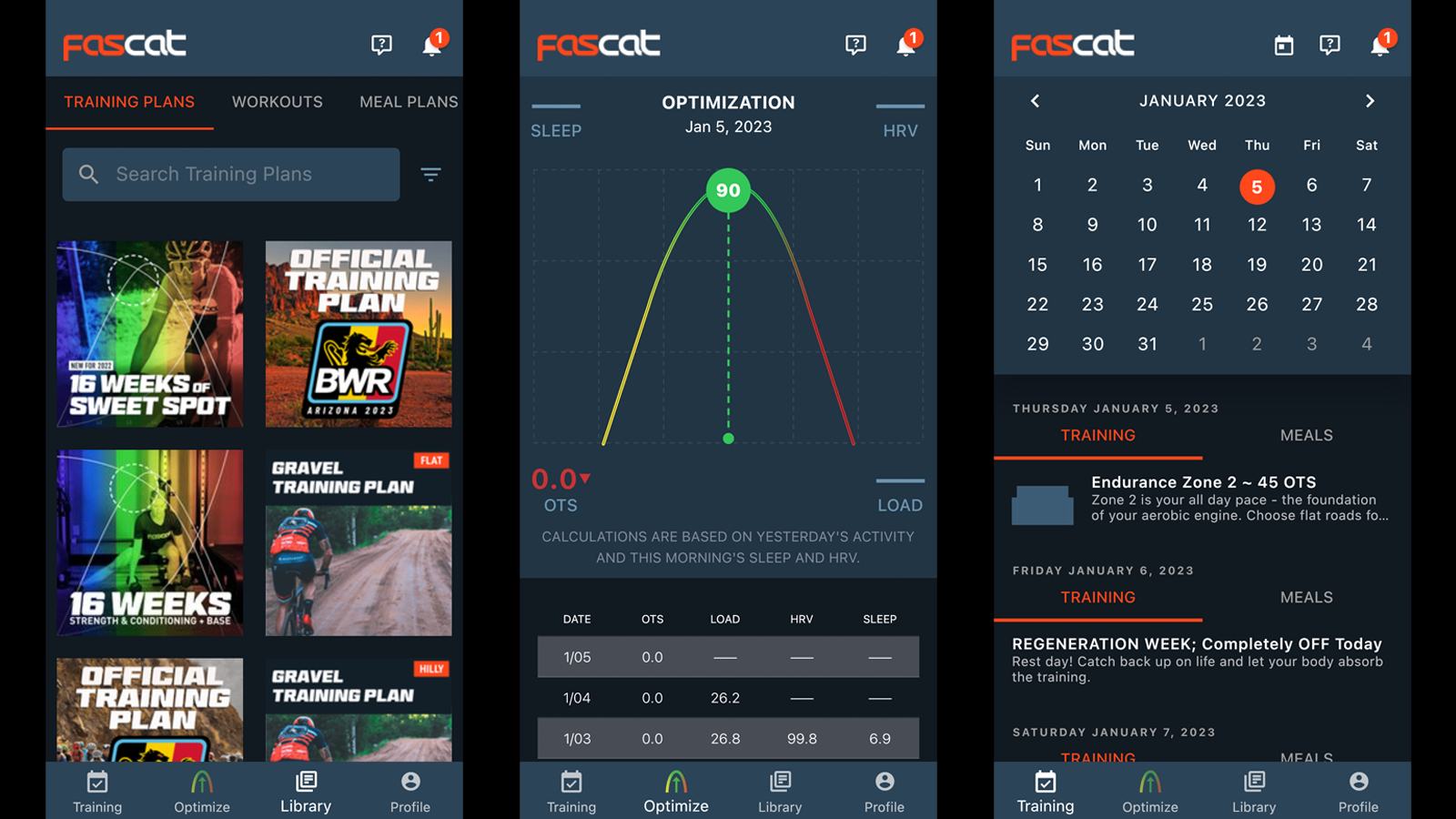New cycling training app connects power and recovery data to tell you when to train
Data from Whoop, Zwift, Garmin and more are laid over a traditional training plan to help you hit your goals

It's well known that the adaptation to training stimulus only occurs during the subsequent rest and recovery period. Therefore if done correctly, combining training data with recovery data has the potential to revolutionize the way athletes train. However, despite recovery apps such as Whoop having been around for more than a decade already, the integration of this data with training platforms is still in its infantry. Training Peaks overlays the data into its PMC (Performance Management Chart), it has been suggested as a 'coming soon' feature by Wahoo Systm and considered by TrainerRoad as a possible future development.
However, now, little-known American cycling training company FasCat Coaching has an app that takes the data and turns it into a simple view that helps its users decide when to train and when to take it easy. It's called FasCat, with the key feature being known as 'Optimize', and it is the brainchild of pioneering sports scientist Frank Overton.
Overton has been a cycling coach for 20 years. In the early 2000s, he worked alongside Dr Andrew Coggan to create terminology that is now commonly used worldwide, including the aforementioned PMC, as well as TSS (Training Stress Score) and others. In 2005, he invented - or perhaps more accurately, defined - Sweet Spot training, which involves training at the top of zone three, around 86-95% of FTP (Functional Threshold Power). He has previously worked with the USA Cycling national team and currently works with the Human Powered Health women's team.
The FasCat app can be paired with data from Whoop and Oura, the leading products that track health metrics such as heart rate variability to assign a 'Recovery' score. We're told Apple Watch support is in the pipeline too. It can also pair with Zwift, Wahoo, and Garmin to pull in training data from power meters or indoor trainers. The app then aggregates the data from both sides and calculates an 'OTS' or Optimized Training Score, as well as an 'Optimization' graphic that shows whether you are overtraining, training optimally, or could train harder. This takes the form of a needle on a dial, not unlike the rev counter on a car, and transitions from yellow (too easy) through green (optimal) into red (overtraining).
In an exclusive conversation with Cyclingnews, Overton confirmed that the app is already being put into practice in his position at Human Powered Health, and the actions and data it provides are being used to not only adjust the intensity of their riders' training but will also be used to decide which riders to take to which races in the coming season.
The app, which launched late in 2022, is priced at $34.99 per month as an ongoing subscription to the FasCat training program. This gives users access to the company's library of training plans and workouts, as well as meal plans, recipes and suggestions for off-bike strength and conditioning work.
The latest race content, interviews, features, reviews and expert buying guides, direct to your inbox!

Josh is Associate Editor of Cyclingnews – leading our content on the best bikes, kit and the latest breaking tech stories from the pro peloton. He has been with us since the summer of 2019 and throughout that time he's covered everything from buyer's guides and deals to the latest tech news and reviews.
On the bike, Josh has been riding and racing for over 15 years. He started out racing cross country in his teens back when 26-inch wheels and triple chainsets were still mainstream, but he found favour in road racing in his early 20s, racing at a local and national level for Somerset-based Team Tor 2000. These days he rides indoors for convenience and fitness, and outdoors for fun on road, gravel, 'cross and cross-country bikes, the latter usually with his two dogs in tow.